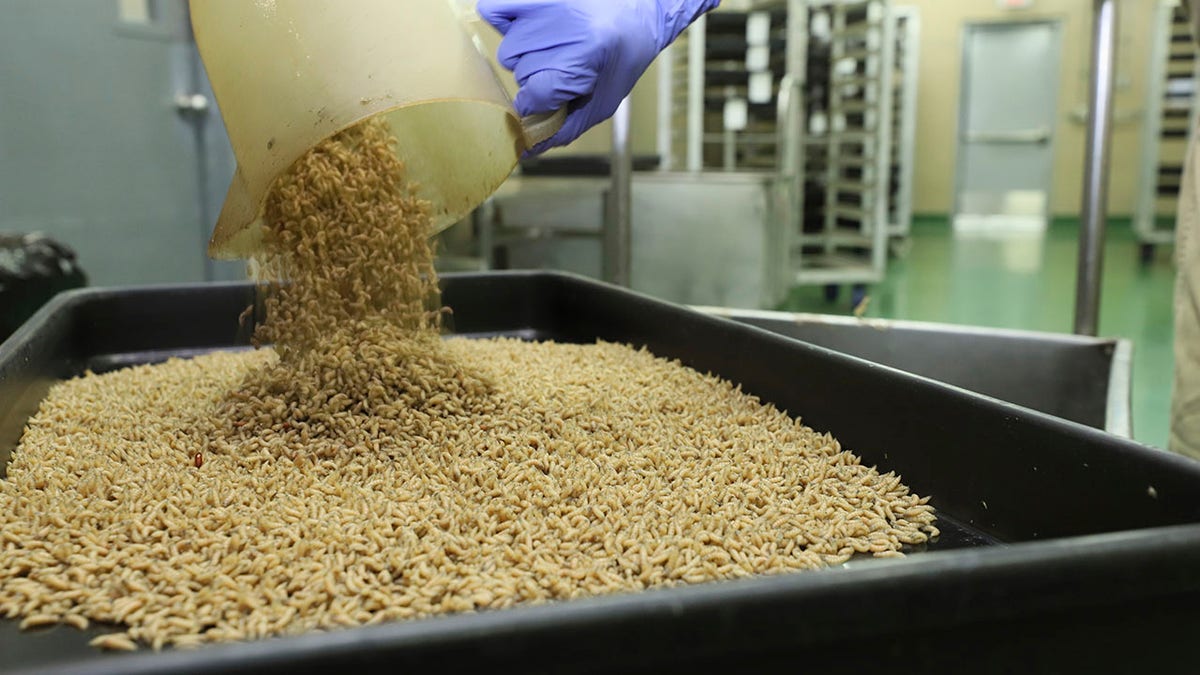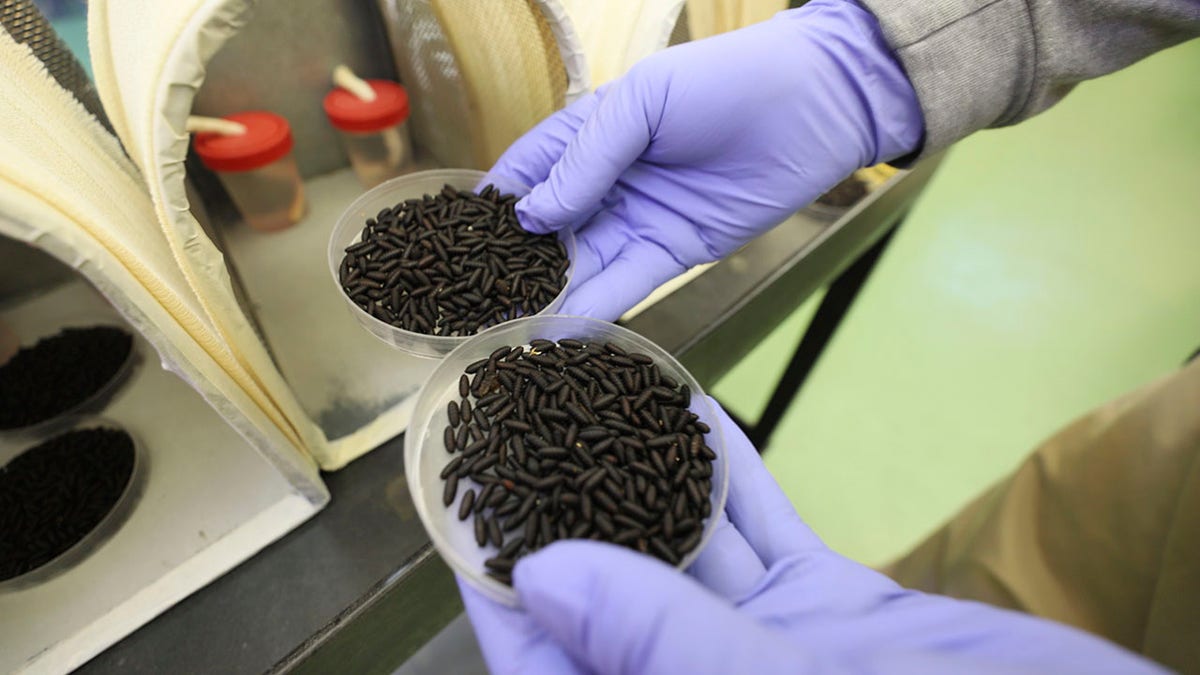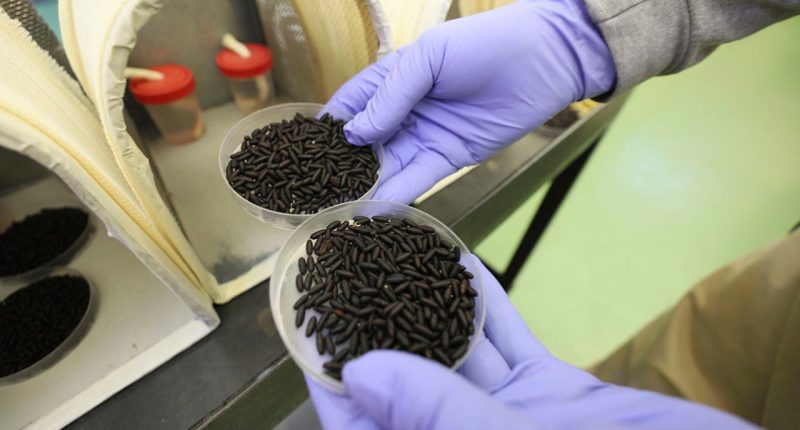Share this @internewscast.com
The U.S. government is set to release millions of flies across Mexico and Texas from airplanes as a strategy to tackle a flesh-eating maggot problem.
The target of this initiative is the larvae of the New World Screwworm (NWS) fly, known for its flesh-eating tendencies. The Department of Agriculture plans to significantly increase the breeding and aerial release of adult male flies. These flies will undergo radiation sterilization prior to being released.
Once released, the sterilized males mate with wild females, resulting in eggs that are unfertilized and fail to hatch. This process gradually reduces the number of larvae, ultimately leading to the decline of the fly population over time.

In this Jan. 2024 photo provided by the Panama-United States Commission for the Eradication and Prevention of Cattle Screwworms (COPEG), a worker drops New World Screwworm fly larvae into a tray at a facility that breeds sterile flies in Pacora, Panama. (COPEG via AP)
“Due to the threat of New World Screwworm I am announcing the suspension of live cattle, horse, & bison imports through U.S. southern border ports of entry effective immediately,” she wrote on X.
The pest is endemic in Cuba, Haiti, the Dominican Republic and some South American countries, according to the USDA’s Animal and Plant Health Inspection Service (APHIS). Despite being found in forests and other wooded areas, they often seek hosts like cattle or horses in pastures and fields, per the above source.
A female fly will often lay eggs in a wound or orifice of a live, warm-blooded animal. The eggs then hatch into larvae (maggots) that burrow into the flesh, causing potentially deadly damage.

In this Jan. 2024 photo provided by The Panama-United States Commission for the Eradication and Prevention of Cattle Screwworms (COPEG), a worker holds two small containers of New World Screwworm fly pupae at a facility that breeds sterile flies in Pacora, Panama. (COPEG via AP)
Between 1962 and 1975, the U.S. and Mexico bred and released more than 94 billion sterile flies to eradicate the pest, according to the USDA.

















